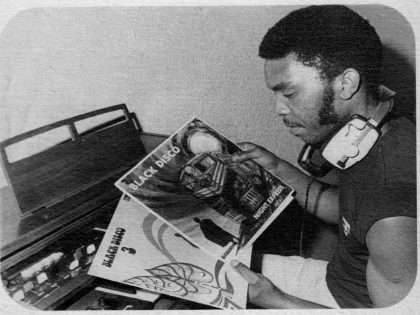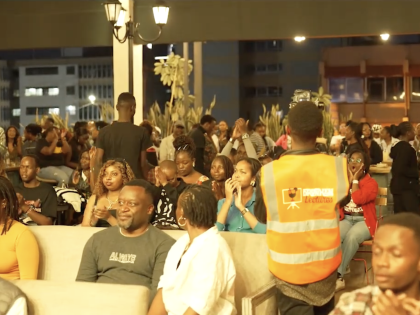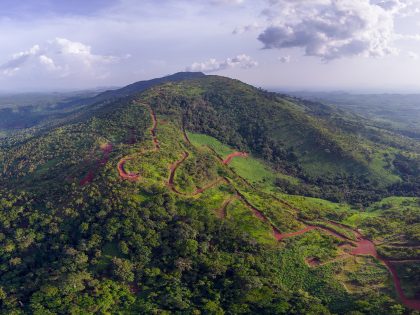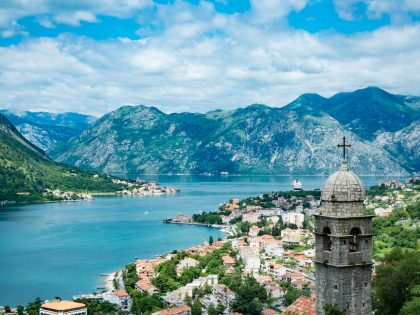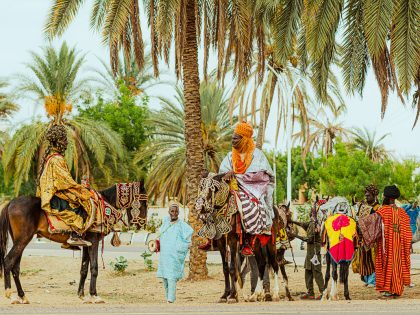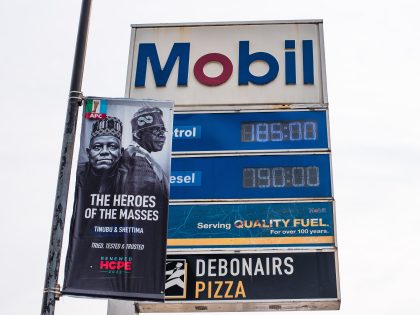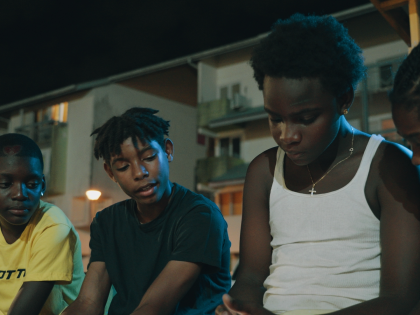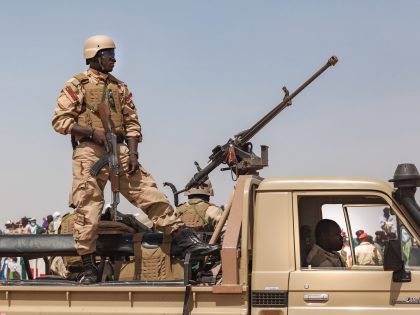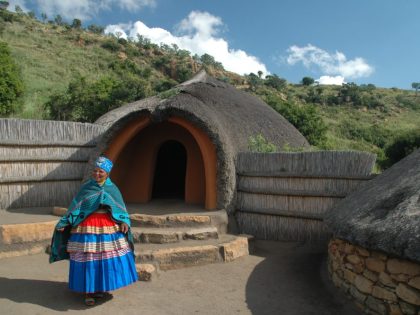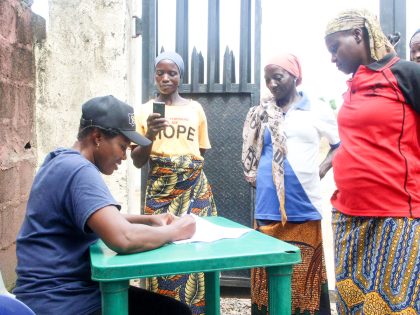Julius Malema’s Tailored Revolution
The color red, berets, and plain workers’ clothing have all become potent aesthetic symbols for South Africa's EFF.

Julius Malema at an EFF rally.
At the end of April this year, South Africa’s Economic Freedom Fighters (EFF), launched its local government elections manifesto in front of 40,000 people in Johannesburg’s Orlando Stadium. Julius Malema, who serves as both the party’s political and sartorial “Commander in Chief,” led the proceedings, sporting his now iconic red beret and jumpsuit. This carefully constructed image is central to the EFF’s populist allure, one the party hopes will prove strong enough to overthrow the ANC in the upcoming local elections.
The color red, berets, and plain workers’ clothing have all become potent aesthetic symbols for the EFF. Standing in monochrome defiance of the ruling African National Congress’s black, green and gold, Malema and his red band use the color to commemorate “those who have died during the struggle for economic freedom.” The color also serves to remind the nation of the 2012 Marikana massacre, which occurred under the watch of the ANC. Berets and the occasional military fatigues convey a revolutionary Guevaran spirit, while overalls and jumpsuits show solidarity with the working class.
But Malema’s closet would surely tell a different story. Somewhere under all the layers of EFF apparel sit past political skeletons. Not so long ago, the South African media rightfully called out the disparity between Malema’s everyman speech and designer shoes. After the media salvo, it’s no mystery why Malema ditched the Gucci suits for something more palatable to the proletariat and better aligned with his platform. Although the media has since eased off, stories of “Malema’s millions” are still fresh for many South Africans.
Beyond media fodder for contradiction between walk and talk, a politician’s outward appearance can convey several messages: defiance, humility, and status among others. Leaders use their outward appearance to elevate themselves above the masses or, in Malema’s case, to walk among them. Physical appearance as political messaging is as old as politics itself. Brown University’s Jeri DeBrohun writes that Greeks and Romans alike appreciated the “potential of the body . . . as a means of marking social, political, religious, and even moral distinctions.”
But one doesn’t have to look to the ancients to witness the power of dress. In Malema’s home country, it’s now the stuff of legend. Nelson Mandela’s outfits were as numerous as his identities: camouflage to flex his strength as leader of the ANC’s military wing, a tailored suit to show his brilliance as a lawyer, and traditional Xhosa garb at a 1962 trial for inciting a work stayaway and leaving the country without a passport. That reference to tradition made deliberate connections between his royal lineage and his emerging role as a black nationalist leader. During the 1995 Rugby World Cup, then president Mandela famously donned the green jersey and cap of the Springboks, South Africa’s national rugby team and former personification of apartheid. Many whites at the time saw this symbolic gesture as an important step towards reconciliation and unification of the fragile new democracy.
Mandela’s successors continued this tradition to suit their own political needs. Thabo Mbeki’s choice of more conservative wardrobe, often suited demurely, reflected his alignment to the West. Although normally also dressed in suit and tie, Jacob Zuma built his public persona in post-apartheid society as a Zulu traditionalist, particularly in his off-duty fashion choices on public holidays.
However, Malema’s red beret does not give one a sense of reconciliation or cultural identity. For better inspiration, we have to look outside South Africa, just as Malema did. The most obvious visual comparison comes from Venezuela’s Chavistas. Before he formed the EFF, Malema expressed his admiration for Hugo Chavez’s Bolivarian Revolution, visited the country and copied, wholesale, Chavistas’s use of the color red as well as the red berets.
An even better historical example for Malema’s stylistic motivations comes from another beret-wearing revolutionary, Thomas Sankara, who EFF leaders often invoke. Until his assassination in 1987, Burkina Faso’s charismatic leader only wore clothing made from cotton grown, dyed, and woven in his home country and exuded the type of self-reliance and national pride he reflected in his anti-foreign aid policies.
In a memorable scene from the documentary “Thomas Sankara: The Upright Man,” Sankara is seen seated, smiling wide, surrounded by a group of men and women listening to him intently. Sankara lifts an arm and beckons a comrade from the crowd to come forward.
See, you’re wearing an advertisement for Levi’s,” he says playfully, as laughter ripples through the crowd. “Yes it’s well made – it’s Levi’s. But it’s American. Don’t you think we have weavers able to make them here?
During his presidency, Sankara launched the Faso Dan Fani, Burkina Faso’s national cloth, and required all public servants to wear homegrown Burkinabé clothing. But this nationalist sentiment could not stem the tide of globalization, even in the 1980s. Public servants often brought the Faso Dan Fani in a bag to work and only took it out during one of Sankara’s infamous surprise visits to government offices. Soon, people dubbed Faso Dan Fani’s as “Sankara’s coming.”
Interestingly, political dress spanned the ideological spectrum. Even more rightwing African leaders tied clothing politics to their ability to reproduce their power. In the early 1960s, Mobuto Sese Seko sought to offset his regime’s dictatorial rule through dress. He decreed a strict African dress code, later known as Authenticité, for the Congolese, to portray himself as a cultural nationalist.
Sankara’s Faso Dan Fani would probably play well with Malema’s comrades today. Amid service delivery and outsourcing protests, especially on university campuses, Malema’s worker jumpsuits complement the manifesto’s main points. If elected, the EFF promises to ensure that a “minimum of 50% of basic goods, services and products consumed in the municipality are manufactured, processed or assembled within the municipality.” Here, the EFF hopes to bring Sankara’s self-reliance to a local level.
Yet it remains to be seen whether the public and the media have bought into Malema’s image and policies. The EFF will find out in August, when South Africans head to the polls to decide whether red is their color or not.

